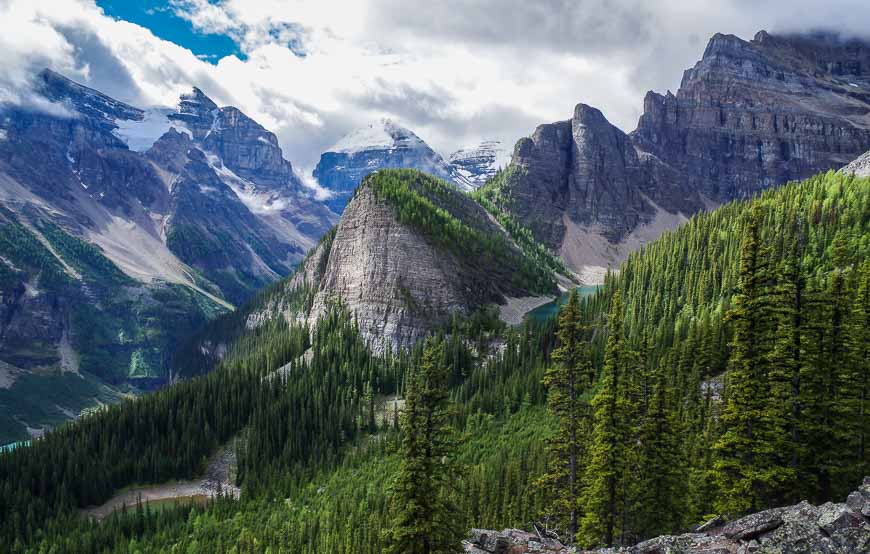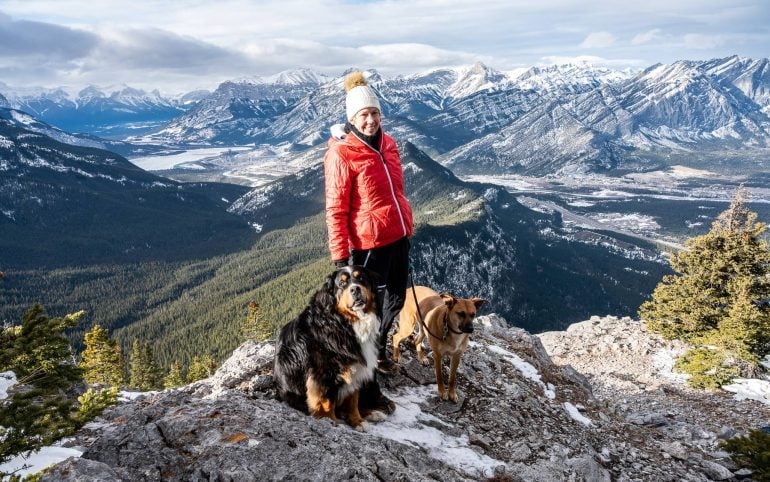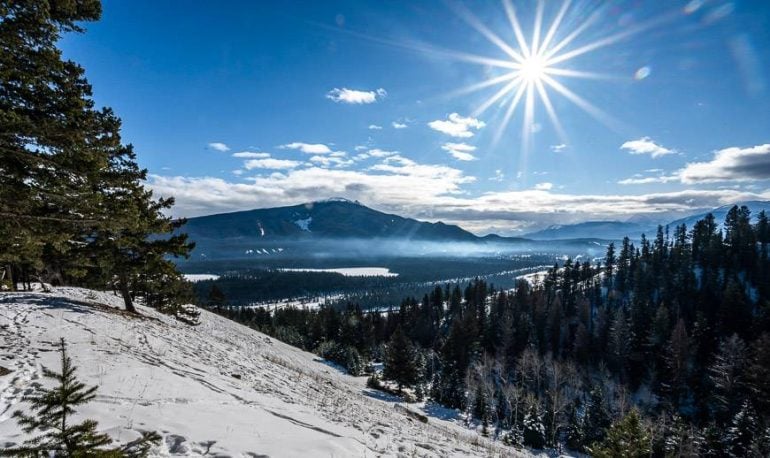Interesting Facts About Alberta
Alberta is one of Canada’s western provinces that is home to both a diverse population and a world – renowned landscape of lakes, forest, prairies, Rocky Mountains – including glaciers, and badlands scenery. With five national parks, over 100 provincial (and wildland provincial) parks along with six UNESCO sites, there is plenty to see and explore. After living in the province for over 10 years, I am still discovering interesting facts about Alberta – many of which lead to travel.
After co-authoring the book –200 Nature Hot Spots in Alberta– I can also tell you that Alberta is a nature lover’s destination. Join my husband John as he showcases over 50 fun and interesting facts about Alberta.
This post includes some affiliate links. If you make a qualifying purchase through one of these links, I will receive a small percentage of the sale at no extra cost to you. Thank you very much for your support.
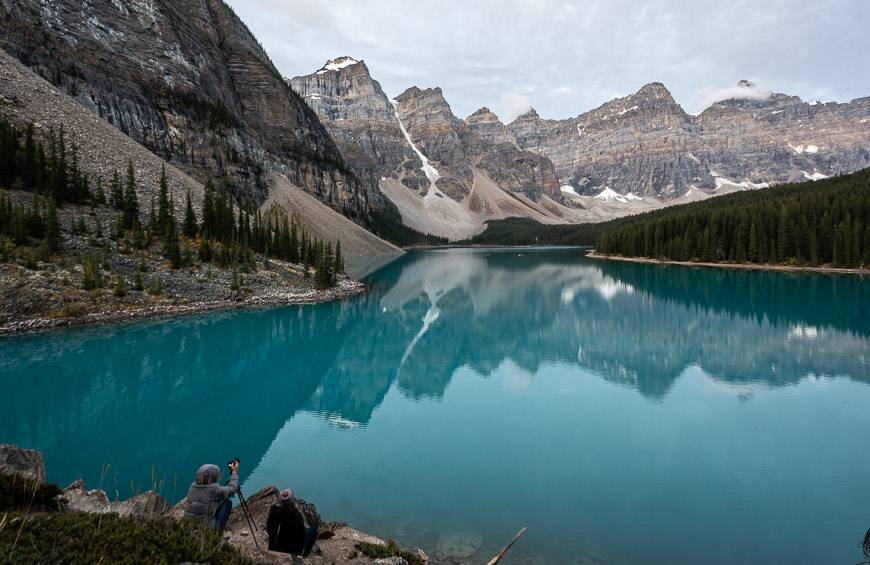
Would you like to save this?
Interesting facts about Alberta related to geography
For those that have never heard of us, we are a province in western Canada.
The shape of Alberta is nearly the same as Saskatchewan to the east, except it looks like British Columbia bit off our southwest corner.
Alberta stretches from the 49th parallel on the southern border with Montana to the 60th parallel, our northern border with the Northwest Territories, a distance of 1200 km (750 miles).
Our eastern boundary with Saskatchewan is the 110th Meridian west. Our western boundary with British Columbia starts in the north on the NWT border, on the 120th Meridian and goes south about two thirds of the way and then angles down to the east about the 114th Meridian on the southern boundary, cutting off the southwest corner!
The longest east – west distance is 640 km or about 400 miles.
Not trying to start a war here, but wouldn’t it be nice if BC would just agree that our border was the 120th Meridian so we could have that southwest corner. Then, we could brag about fine Albertan Okanagan wine and get a few more ski hills as well.
Area wise, we are about 661 thousand square kilometres or about 225 thousand square miles.
If we were a state in the US, we’d be the third biggest state after Alaska and Texas.
In European terms, we are bigger than France although they make better croissants.
One of the interesting facts about Alberta is that we along with Saskatchewan are land-locked.
The highest point in Alberta is Mount Columbia at 3,747 metres (12,293 feet) above sea level. No bragging rights here because BC and the Yukon have higher peaks.
Much more oxygen though, on the Slave River where it exits Alberta on the 60th parallel (on its way to the Arctic Ocean) at an elevation of 210 m (690 feet).
Alberta has mountains in the west and flat and rolling plains to the east except the Cypress Hills in the southeast that we share with Saskatchewan. The Cypress Hills, 1,468 m (4,816 feet) above sea level, are the highest part of Canada between the Rocky Mountains and the Torngat Mountains in northern Labrador and Quebec which rise to over 1,646 m (5,400 feet) above sea level.
The northern part of the province is boreal forest with some large lakes and more trees than you can shake a stick at.
Alberta has lots of glaciers and water from various glaciers and mountains flow to the Pacific, Arctic and Hudson’s Bay which is connected to the Atlantic (and Arctic Oceans).
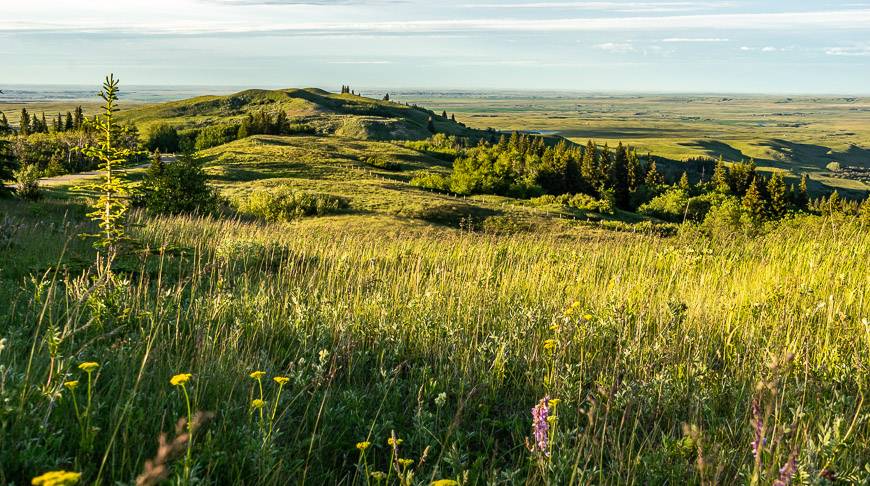
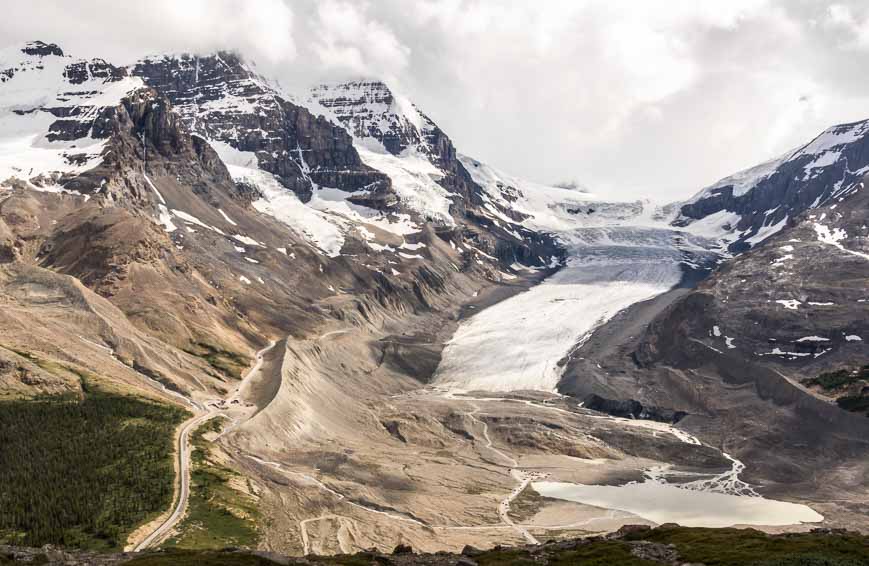
Interesting facts about Alberta weather
Travel Alberta says we have 312 sunny days a year. Now that may not be sun 312 days all day long but nevertheless the sun appears 312 days a year.
Apparently, the hottest temperature recorded in Alberta was 43.3 °C (110 °F) on July 21, 1931, at Bassano Dam.
On the other side of the equation, it was reportedly -61.1°C below zero in Fort Vermillion on February 3rd, 1911.
Alberta is also famous for chinooks. These are warm winds that come out of the mountains and can warm a day by 22°C or 40°F in a hour or so.
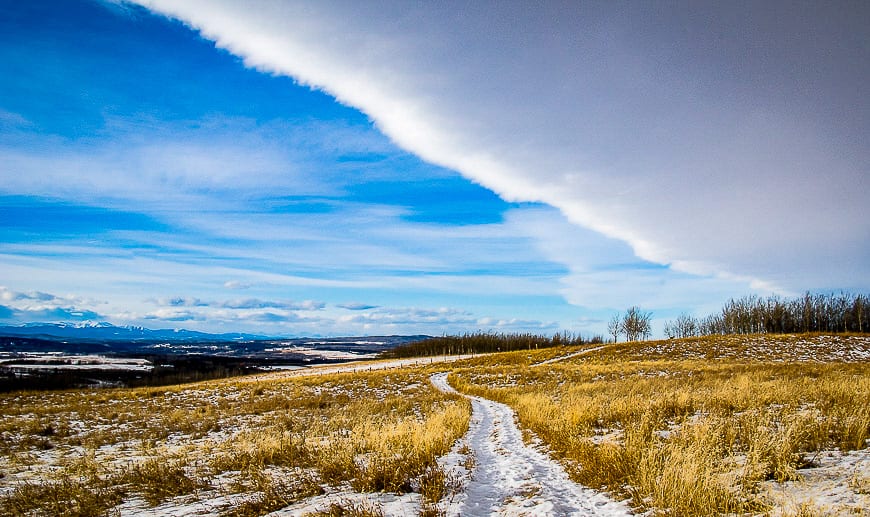
Interesting facts about parks and UNESCO sites in Alberta
We have lots of parks in Alberta! In fact, Banff National Park, established in 1885, was the first one in the country. Since then, Yoho, Kootenay and Jasper National Parks which are contiguous to Banff National Park have been added, forming a large area of mountain parks (and they make up one of the six UNESCO sites). When you add in the provincial parks on both sides of the border there is a whole lot of protected land in the Rockies!
Alberta has five national parks: Jasper, Banff, Waterton Lakes, Elk Island and Wood Buffalo.
Recommended reading: Best Things to Do in Waterton Lakes National Park
Alberta has more than 100 provincial and wildland provincial parks according to the Alberta Parks’ website.
Alberta has six UNESCO World Heritage Sites!
- Waterton-Glacier International Peace Park straddles the Canada – US border.
- Wood Buffalo National Park is in both Alberta and the NWT and is one of the largest land parks on the planet. Notice the word land, as there are some crazy big marine parks.
- Rocky Mountain Parks – only has majestic mountains, spectacular scenery and wildlife.
- Dinosaur Provincial Park where it shouldn’t surprise you if you come across a dinosaur bone or fish bit emerging from the badlands outcrops.
- Head-Smashed-In Buffalo Jump (this is not a word salad, it’s a real name!) where Indigenous peoples drove buffalo over a cliff and recovered the buffalo bodies below.
- The latest edition is Writing-on-Stone Provincial Park. It was designated because “the park demonstrates recognition and respect towards the Blackfoot and other First Nations by highlighting its global cultural significance.”

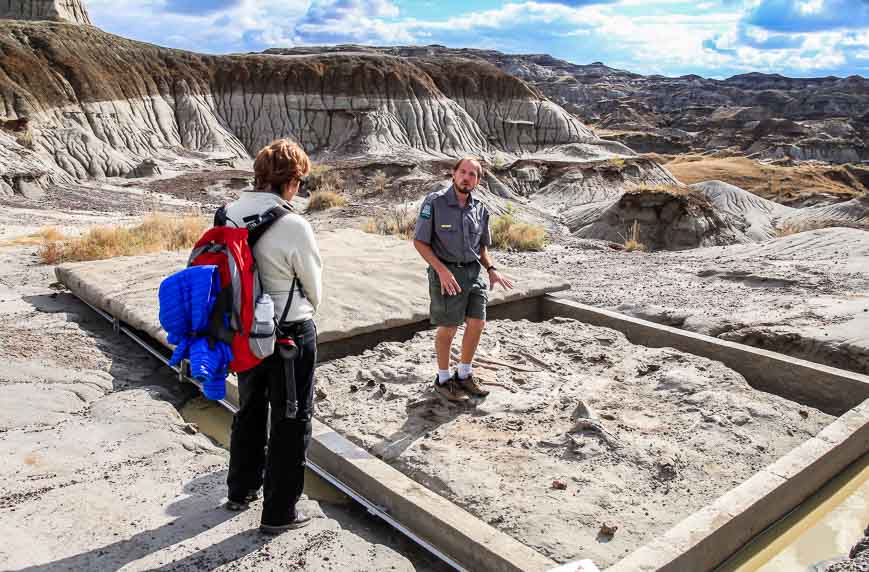
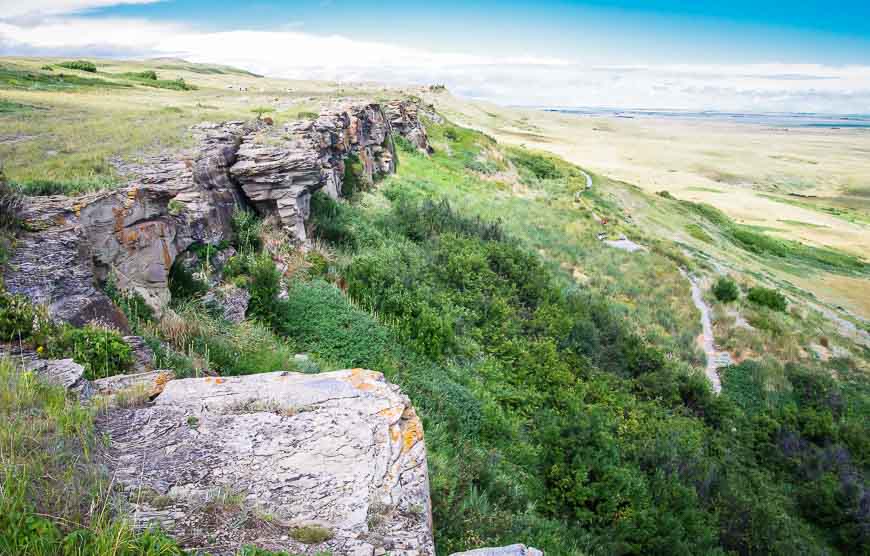
Glaciers and other interesting natural things to see
Alberta emerged from the ocean bottom during the building of the Rocky Mountains, but it has not been all wild roses (Alberta’s provincial flower) since then. For instance, there have been a few glacial periods where most of the plain, except some parts of the Cypress Hills, were covered by continental glaciers over 1 km thick. And most of the mountains except the tallest peaks were covered in alpine glaciers. The glaciers haven’t all melted, and you can still enjoy seeing or actually walking on them in places like the Columbia Icefield.
Alberta had large areas of sand dunes although they are now well disguised by a lush green carpet of vegetation. These were probably formed as the glacier was receding and there was lots of loose sand around for the wind to push around. Around Red Deer and east of Vulcan are two areas that come to mind but keep an eye out when you are driving about the plains, and you’ll be surprised how often you see “green sand dunes”.
Canada’s worst natural disaster was the Frank Slide in southwest Alberta when a huge chunk of Turtle Mountain broke off. It slid down the mountain killing 76 people in the town of Frank on April 29, 1903.
The highway now goes through the slide area which is 3 km wide and up to 30 m deep. Sixteen miners were trapped in a coal mine but dug themselves out. Turtle Mountain is closely monitored and one day some more of it is going to slide down. Don’t linger on the highway!
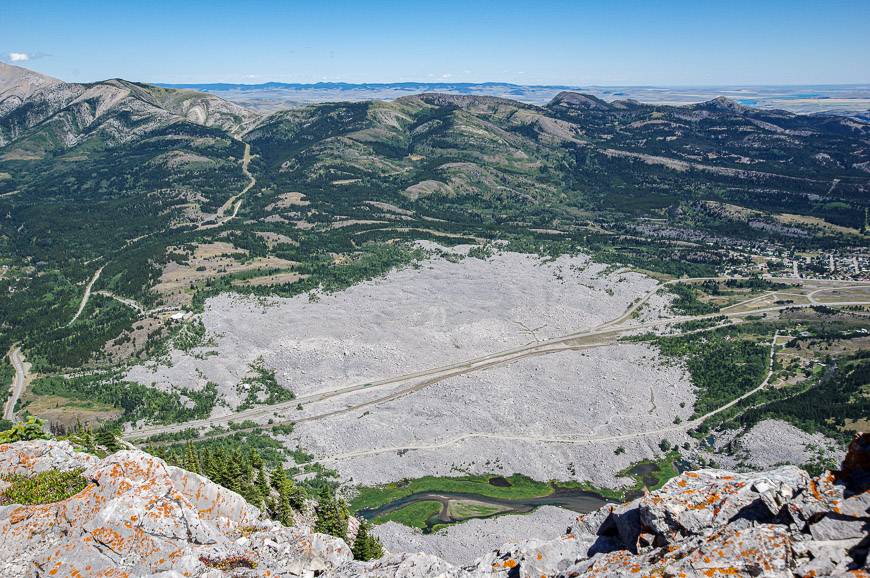
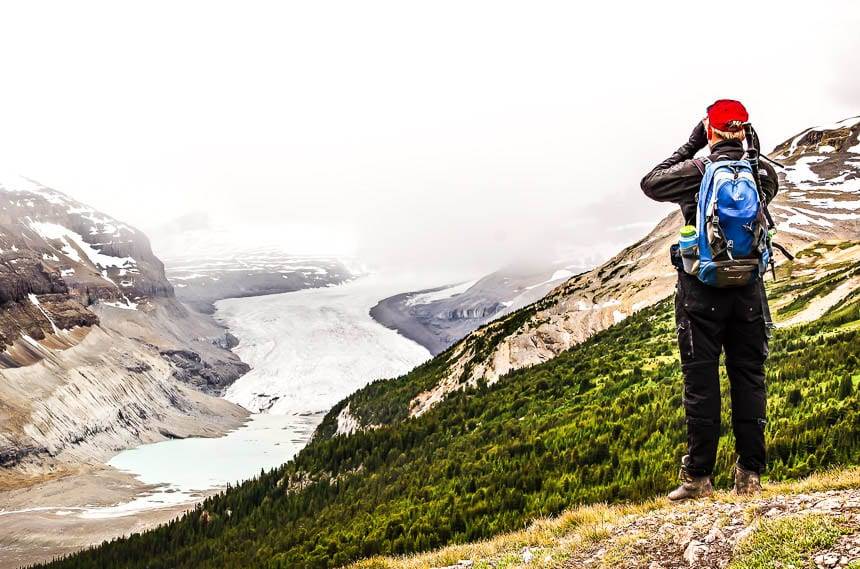
Interesting facts about Alberta wildlife
One of the interesting facts about Alberta is that it is a rat-free province. Rats are not welcome in Alberta from a crop perspective. Also, it is not legal to have a pet rat here. Alberta is reported to be the largest rat-free inhabited land area in the world.
The province has majestic species of wildlife including the Rocky Mountain bighorn sheep, the provincial animal, which at one point roamed well into the plains. Interestingly bighorn sheep run a car washing service in winter when they lick the salt off cars. The service is free, but they are not very thorough.
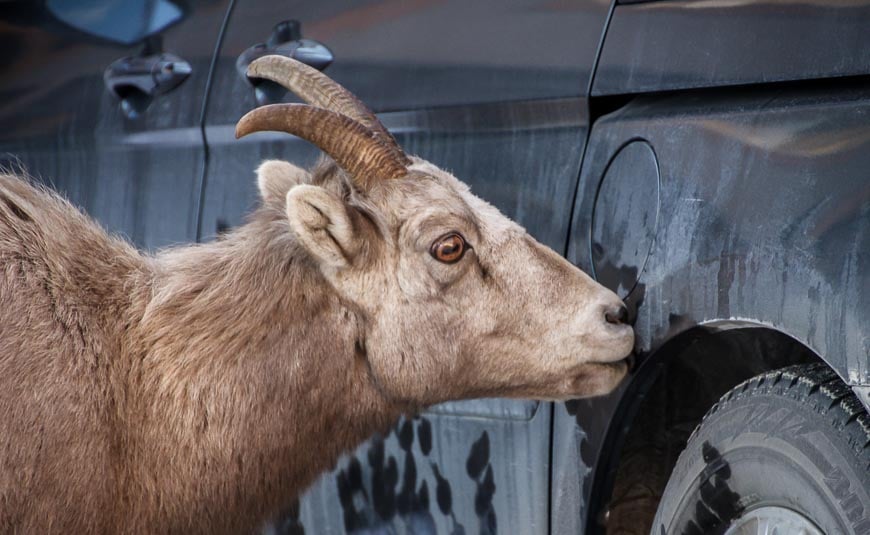
Buffalo, moose, grizzly bears, and elk are amongst the larger animals of the total of 587 species cataloged to live in Alberta.
You may not be surprised that we had mammoths after the Ice Age, but did you know we had camels in Alberta too? Regrettably, both are extinct, but still one of the interesting facts about Alberta.
If there is anyone else who likes to look at and seek out birds, 437 bird species have been spotted in Alberta. In case you didn’t know, the great horned owl is the provincial bird. Spoiler alert! It doesn’t have horns just feathers.
Recommended reading: The Search for Snowy Owls in Alberta
Apparently, our provincial stone is petrified wood which is almost as confusing as having a bull trout as the provincial fish.
One of the interesting facts about Alberta is we have the largest beaver dam in the world. It’s 850 metres long and is located in Wood Buffalo National Park.
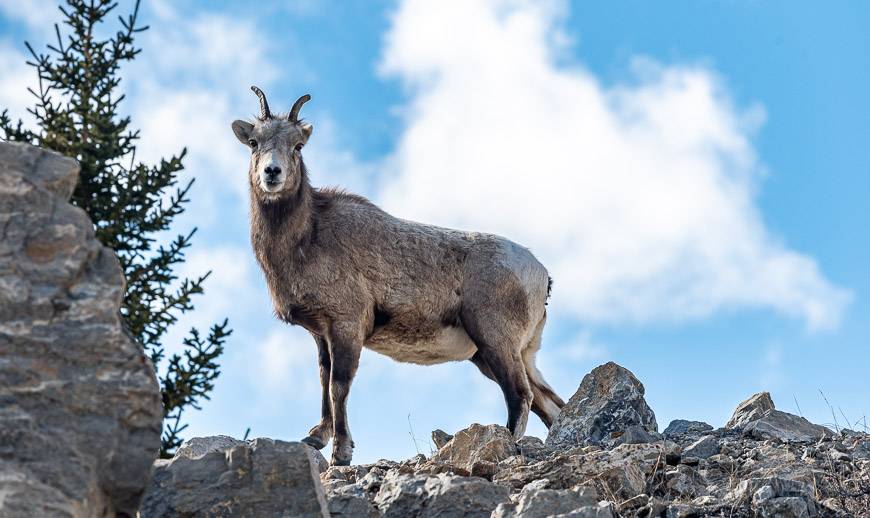

People and history of Alberta
As the glaciers retreated, it is only natural that people followed the ice front north. The earliest evidence so far is from Wally’s Beach which is now underwater behind St. Mary’s Dam in southern Alberta. Some artifacts from there have been dated at 13,300 years old and that site rendered over 3,000 artifacts including the surprisingly unexpected, slightly mesmerizing fact that camels lived here.
Alberta was home to many Indigenous groups through the millennia as archaeological evidence gives us a window into the past including their adaptations to previous changes in climate.
Tragically, Indigenous populations were decimated by the arrival of Europeans although Indigenous peoples are gaining back their pride and presence in Alberta.
Alberta, the province, was established in 1905.
The province was named after a daughter of Queen Victoria – Louise Caroline Alberta. They used her other names too e.g. Lake Louise and the Town of Caroline.
Louise lived in Canada as her husband was Governor General of Canada. She was bilingual, a supporter of women’s rights, a patron of the arts but also liked tobogganing, curling, and skating. That’s my kind of Princess!
Here are some notable firsts in Alberta and by Alberta Women.
- 1916 – Women were first granted the right to vote in Manitoba, Saskatchewan and Alberta.
- 1916 –Emily Murphy was appointed the first female judge in the British Commonwealth.
- 1917 – The first women in the entire British Empire to be elected to a legislature were here in Alberta: Louise McKinney and Roberta MacAdams – no relation.
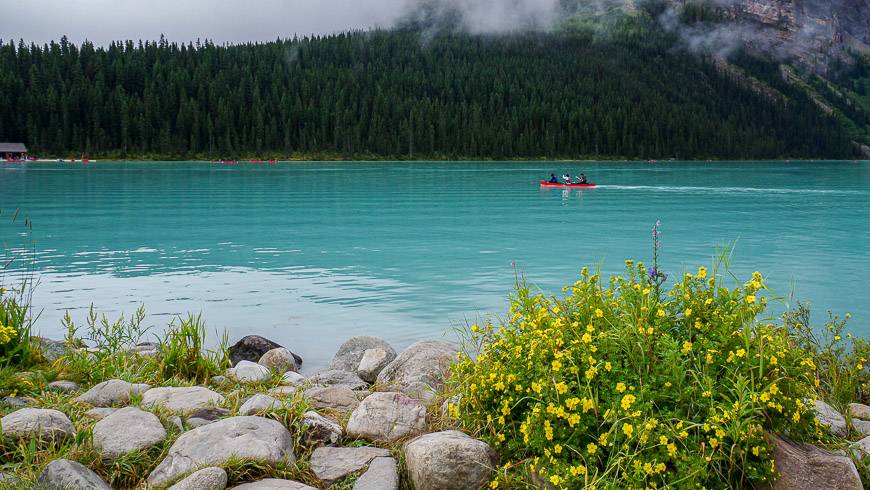
Interesting facts about Alberta related to cities
One of the interesting facts about Alberta is that Edmonton was picked as the capital because it’s the geographic centre of the province.
Edmonton has the worlds largest indoor mall – the West Edmonton Mall – but unfortunately we are not mall people.
As you have seen, Alberta likes to share eg. parks, borders, air etc. but we also share a city as Lloydminster is in both Alberta and Saskatchewan.
The Trans-Canada railway reached Calgary in 1883 and on the way here, they accidently discovered natural gas near Medicine Hat when they were drilling a water well.
Calgary has a network that is now over 18 km (11 miles) long that has more than 60 bridges that interconnect many buildings downtown. It is called the Plus 15 because most of it is about 15 feet (4.572m) off the ground.
One more Calgary thing is the Calgary Stampede which is billed as the Greatest Outdoor Show on Earth. I think nature puts on a greater show but that’s just me. But, the Stampede is fun and you get free pancakes!
One of the Alberta interesting facts is that the population in 2023 is about 4.75 million people of which about 116,000 identify as First Nations People.
Alberta has two NHL hockey teams; the Edmonton Oilers and the Calgary Flames who are currently working on their golf games so let’s not talk playoffs, especially in 2021.
We also have two CFL football teams: the Edmonton Elks and the Calgary Stampeders.
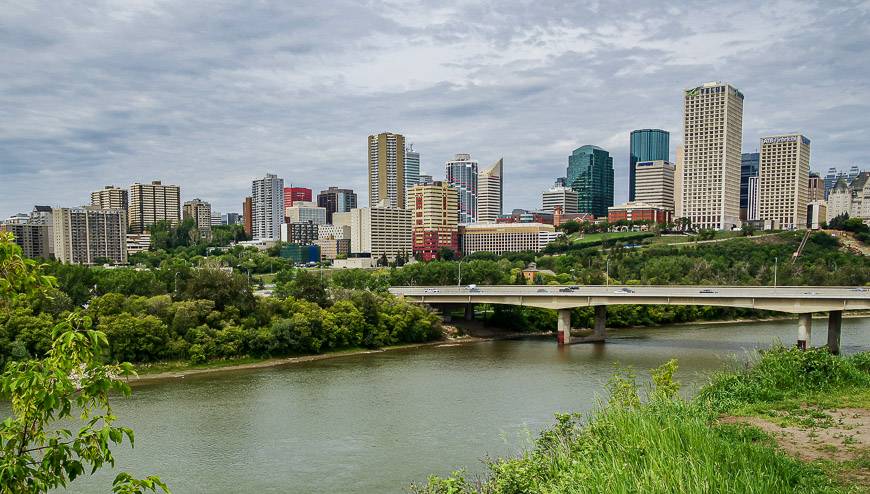
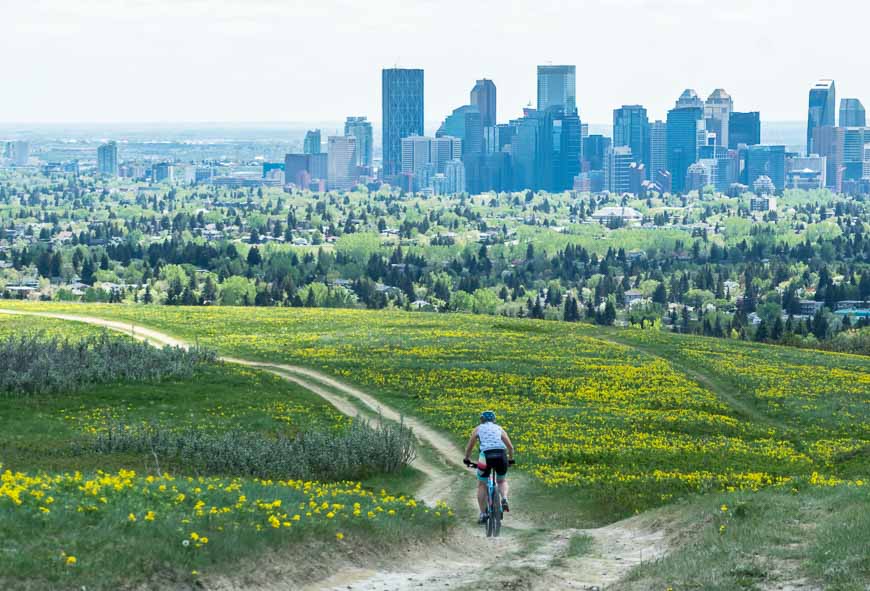
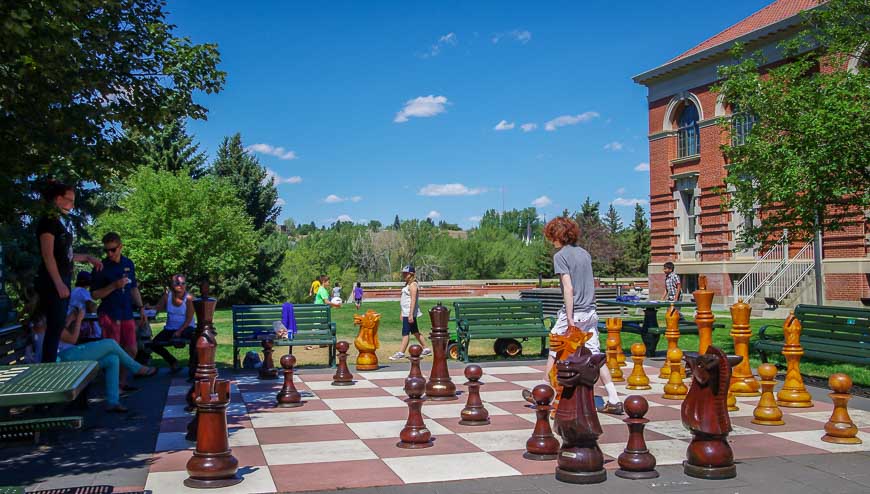
Random, irrelevant but interesting Alberta facts
Alberta is only worth 9 Scrabble points. Too bad they didn’t name us Mozambique because that is worth 34 Scrabble points. Except, you can’t use place names in Scrabble.
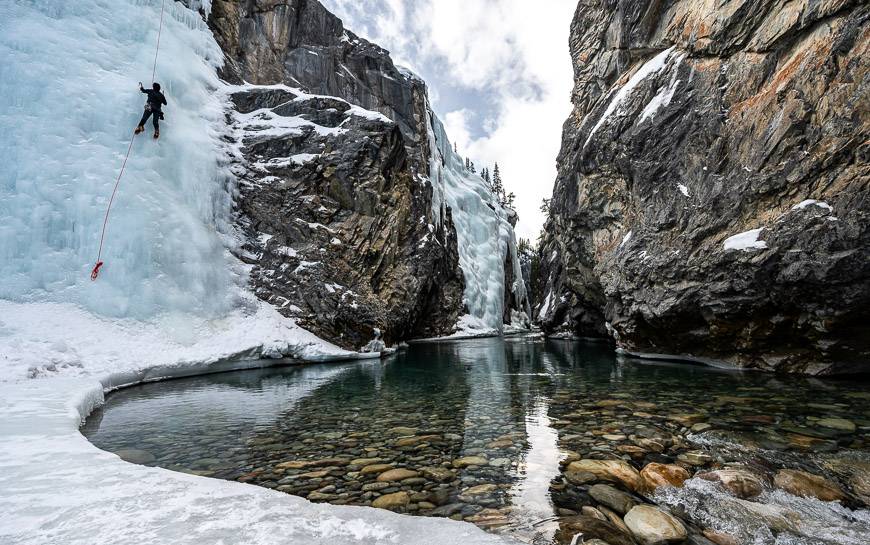
Further reading about things to do in Alberta
- 12 Great Alberta Hikes You’ve Probably Never Heard Of
- 9 of the Best Places to Paddle in Alberta
- 7 Amazing Alberta Ski Resorts You’ll Want to Visit
- 12 Charming Inns of Alberta to Visit Year Round
- 10 Best Things to Do in Alberta in Winter
This guest post was kindly written by my husband, John McAdam.
Click on the photo to bookmark to your Pinterest boards.

